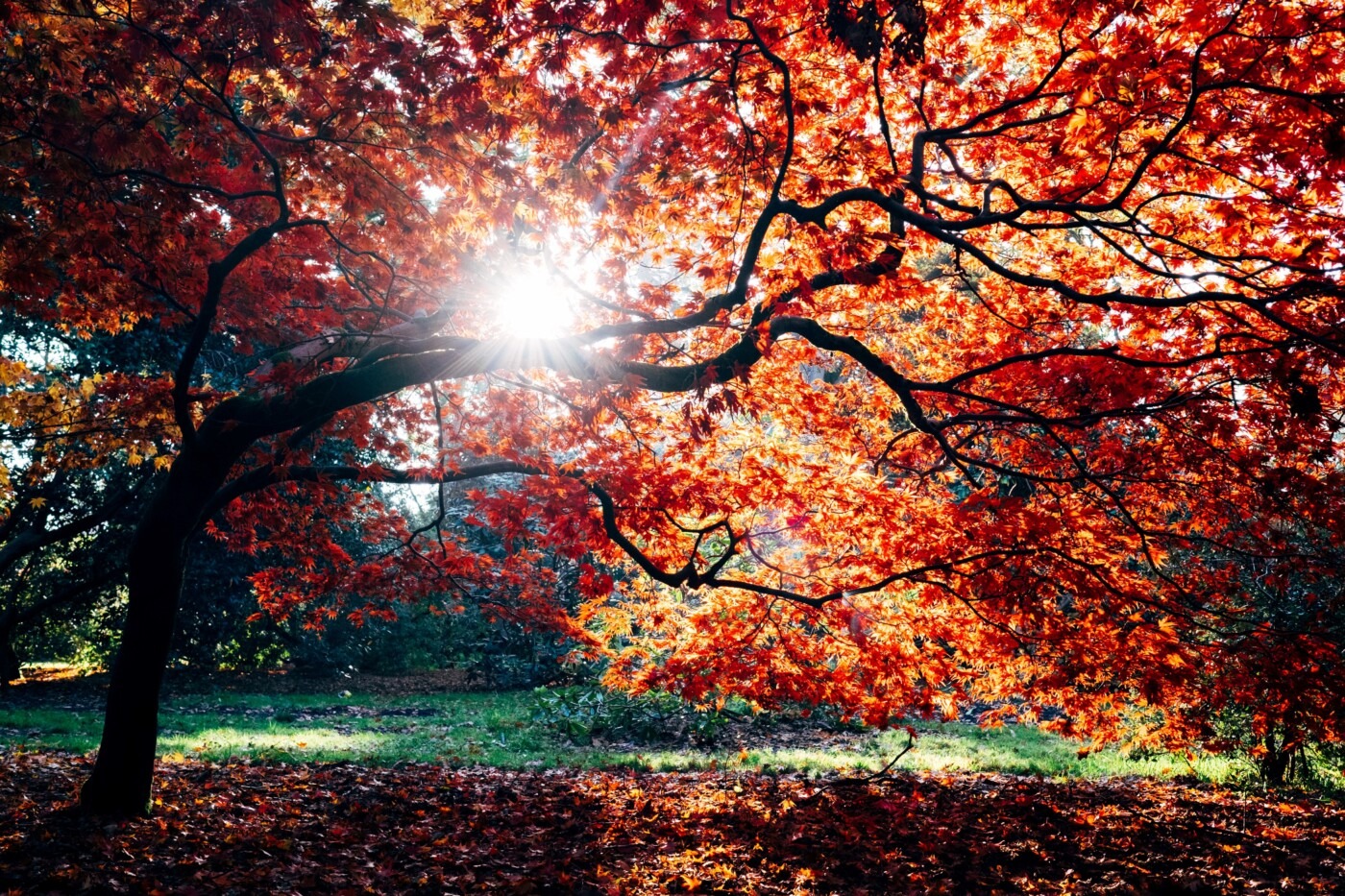Changing trees and the chemistry of colour
Trees: the life and soul of our planet! Not only do they sustain life, but more importantly they provide a scintillating medley of colours, encapsulating the diversity and beauty of the Earth. Whether we are experiencing the historic green and sage maroon of a rural countryside or have been lucky enough to witness the youthful burst of a rainbow eucalyptus, trees manage to combine a world of beauty and history into a few square metres. But how do trees change their colour when seasons change? And how do they display such a vibrant variety of colours within such a short span of time?
Chlorophyll [..] gets broken down more quickly as the rate of photosynthesis decreases
Well, to answer this we need to dive into a lovely bit of chemistry. Trees change colour depending on the rate of chlorophyll breakdown. Chlorophyll, the chemical that turns leaves green, gets broken down more quickly as the rate of photosynthesis decreases. This happens more in the colder autumnal months as we get less sunlight: the fuel for photosynthesis. When the amount of chlorophyll eventually decreases below a certain level, the tree releases abscisic acid to begin a process known as shedding. Abscisic acid acts as a water seal, a bit like a bath plug, preventing water entering leaves and thus reducing water loss from the plant when its chance of creating energy is at its minimum. But why on earth does this change their colour?
The abscisic acid-caused-bath plug stops any chlorophyll and water from entering leaves. As chlorophyll is then broken down, there is nothing left to replace it, causing leaves to lose their source of green. This, as well as a lack of water, causes them to brown and shrivel. However, why is there such a varied assortment of colours within the span of a single tree?
This is caused by separate mechanisms controlling the release of abscisic acid for each individual leaf. As the leaves on the outside of the tree see more sunlight, they will photosynthesise for longer, and keep as much chlorophyll as possible, remaining green for longer than the leaves in the shaded centre of the tree. As this is a gradual process with a continuous colour change, there is a enormous range of colours due to the differing levels of chlorophyll within each individual leaf!
And thus, we can see how a few feats of chemistry transform the humble tree into a dazzling work of art.

Comments